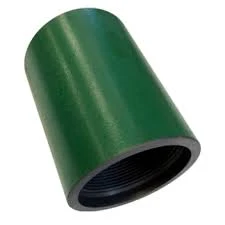- Afrikaans
- Albanian
- Amharic
- Arabic
- Armenian
- Azerbaijani
- Basque
- Belarusian
- Bengali
- Bosnian
- Bulgarian
- Catalan
- Cebuano
- Corsican
- Croatian
- Czech
- Danish
- Dutch
- English
- Esperanto
- Estonian
- Finnish
- French
- Frisian
- Galician
- Georgian
- German
- Greek
- Gujarati
- Haitian Creole
- hausa
- hawaiian
- Hebrew
- Hindi
- Miao
- Hungarian
- Icelandic
- igbo
- Indonesian
- irish
- Italian
- Japanese
- Javanese
- Kannada
- kazakh
- Khmer
- Rwandese
- Korean
- Kurdish
- Kyrgyz
- Lao
- Latin
- Latvian
- Lithuanian
- Luxembourgish
- Macedonian
- Malgashi
- Malay
- Malayalam
- Maltese
- Maori
- Marathi
- Mongolian
- Myanmar
- Nepali
- Norwegian
- Norwegian
- Occitan
- Pashto
- Persian
- Polish
- Portuguese
- Punjabi
- Romanian
- Russian
- Samoan
- Scottish Gaelic
- Serbian
- Sesotho
- Shona
- Sindhi
- Sinhala
- Slovak
- Slovenian
- Somali
- Spanish
- Sundanese
- Swahili
- Swedish
- Tagalog
- Tajik
- Tamil
- Tatar
- Telugu
- Thai
- Turkish
- Turkmen
- Ukrainian
- Urdu
- Uighur
- Uzbek
- Vietnamese
- Welsh
- Bantu
- Yiddish
- Yoruba
- Zulu
coupling tube fitting
Understanding Coupling Tube Fittings A Comprehensive Overview
Coupling tube fittings are essential components in various fluid and gas transportation systems. These fittings play a crucial role in connecting two pieces of tubing or piping, ensuring a secure and leak-proof joint that can withstand high pressure and temperature conditions. In this article, we will explore the types, materials, advantages, and applications of coupling tube fittings.
Types of Coupling Tube Fittings
Coupling tube fittings come in various designs to suit different applications. The most common types include
1. Straight Couplings These fittings allow two tubes to connect in a straight line, providing a seamless flow of fluids. They are widely used in applications where the alignment of tubes is straightforward.
2. Reducing Couplings These fittings are designed to connect pipes of different diameters. They enable a smooth transition from a larger pipe to a smaller one, which is particularly useful in systems where flow requirements change.
3. Elbow Couplings These fittings are used to change the direction of flow in a piping system. Available in various angles, commonly 45 or 90 degrees, elbow couplings allow for flexible routing of tubing in confined spaces.
4. Cross Couplings These fittings enable connections at four points, facilitating the branching of tubing in multiple directions. Cross fittings are essential in complex piping arrangements, making them versatile for various industrial applications.
5. Union Couplings These are used when disassembly is needed for maintenance or repairs. They consist of three components, allowing for easy detachment without having to cut the tubing.
Materials Used in Coupling Tube Fittings
coupling tube fitting

The choice of material for coupling tube fittings is critical, as it impacts durability, resistance to corrosive substances, and temperature tolerance
. Common materials include- Brass Known for its strength and corrosion resistance, brass fittings are ideal for plumbing and HVAC applications. - Stainless Steel Offering exceptional durability and resistance to oxidation, stainless steel fittings are commonly used in critical applications, including food and beverage processing and pharmaceuticals. - Plastic Suitable for low-pressure applications, plastic fittings are lightweight and resistant to certain chemicals, making them a cost-effective choice for non-critical systems.
Advantages of Using Coupling Tube Fittings
Coupling tube fittings offer numerous advantages that make them a preferred choice in various industries
- Ease of Installation Most coupling fittings are designed for quick and straightforward installation, saving time and labor costs. - Versatility With a variety of types available, coupling fittings can be used in diverse applications, accommodating different sizes and piping configurations. - Leak Prevention High-quality coupling fittings provide a secure and tight fit that minimizes the risk of leaks, ensuring system integrity and safety. - Maintainability Union couplings and other easily detachable fittings enhance maintenance capabilities, allowing for quick repairs or replacements without significant downtime.
Applications of Coupling Tube Fittings
Coupling tube fittings are widely used across various industries. Some prominent applications include
- Automotive Industries Coupling fittings are vital for connecting fuel lines, coolant systems, and compressed air ducts. - Chemical Processing In chemical plants, these fittings are used to transport various substances, requiring materials that can withstand corrosive chemicals. - Aerospace The aerospace sector relies on robust fittings to ensure the safety and reliability of fluid systems in aircraft. - Construction In plumbing applications, coupling fittings are essential for connecting different sections of piping systems efficiently.
In conclusion, coupling tube fittings are indispensable components in modern piping systems, facilitating the safe and efficient transportation of liquids and gases. Understanding their types, materials, advantages, and applications can help industries select the right fittings for their specific needs, ultimately enhancing system performance and reliability.
-
Tubing Pup Joints: Essential Components for Oil and Gas OperationsNewsJul.10,2025
-
Pup Joints: Essential Components for Reliable Drilling OperationsNewsJul.10,2025
-
Pipe Couplings: Connecting Your World EfficientlyNewsJul.10,2025
-
Mastering Oilfield Operations with Quality Tubing and CasingNewsJul.10,2025
-
High-Quality Casing Couplings for Every NeedNewsJul.10,2025
-
Boost Your Drilling Efficiency with Premium Crossover Tools & Seating NipplesNewsJul.10,2025







